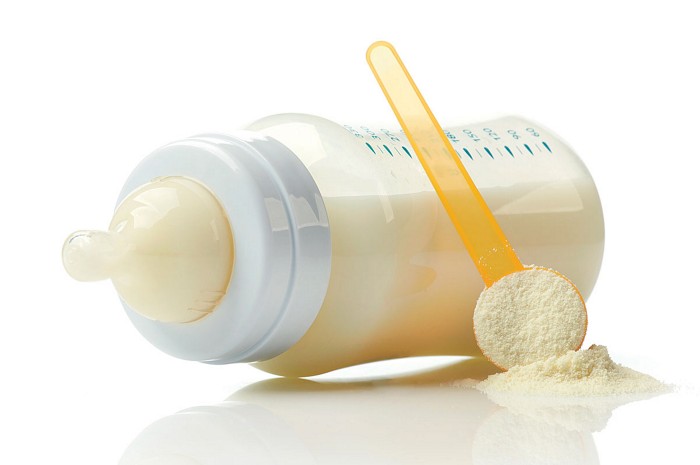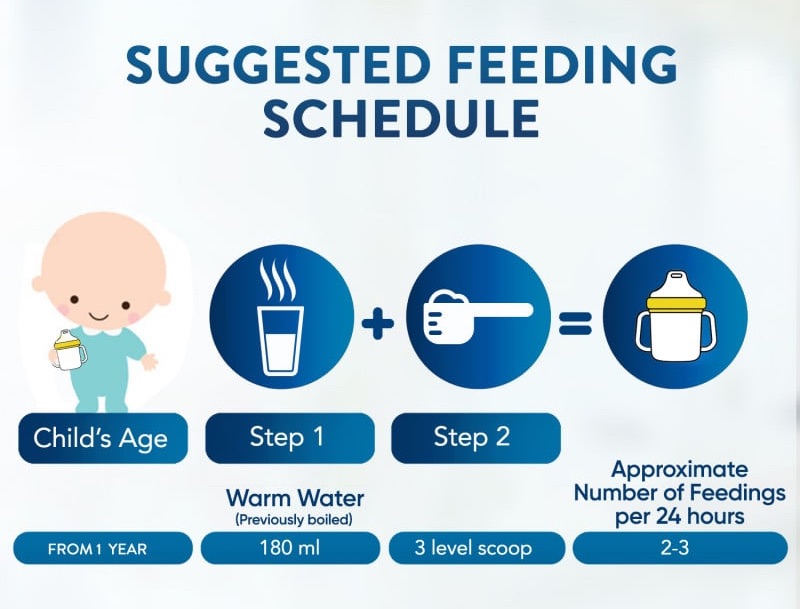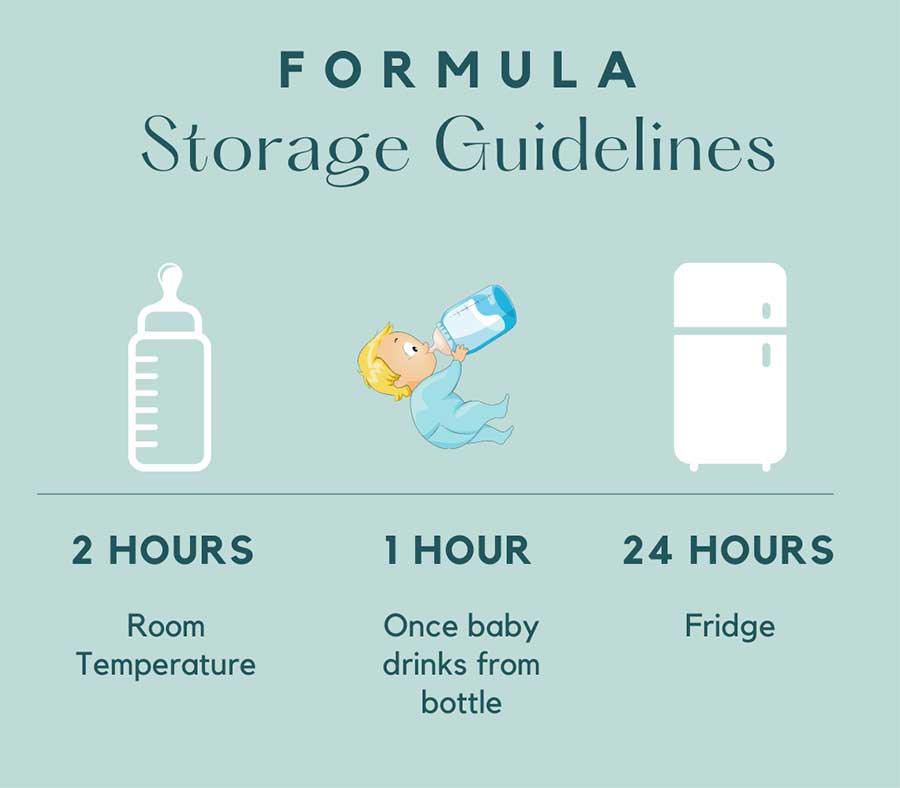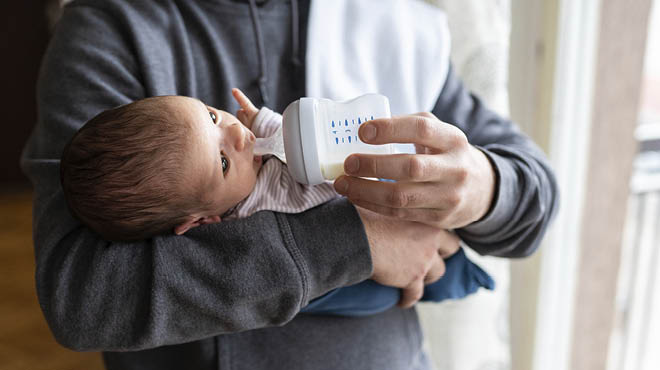
As new parents, every aspect of caring for your newborn can feel like uncharted territory. From deciphering their cries to finding the perfect feeding routine, an endless stream of questions arises. One question that frequently pops up: Can newborns drink cold formula? Let’s delve deeper into this topic, exploring the safety, pros and cons, and offering insights to help you navigate this decision for the newborn.
You don’t give a newborn a cold formula (meds) without the doctor’s approval. Period.
You can give formula milk if you are unable to feed after birth but choose a milk which is similar to mother’s milk at least room temp or warmer.
Understanding Powder Formula
Powdered formula, a shelf-stable alternative to ready-to-feed options, requires meticulous preparation involving precise measurement and sterilization techniques. It offers advantages like cost-effectiveness, extended shelf life, and portability. However, meticulous mixing and sterilization are crucial for safe use, as discussed in the “Preparation Instructions” section.

Age Appropriate: Is It Safe for Newborns?
The good news is, cold formula is completely safe for healthy newborns. There are no health risks associated with offering formula at room temperature or even slightly chilled. In fact, the American Academy of Pediatrics (AAP) and the World Health Organization (WHO) both endorse this practice.
However, it’s important to note that premature babies may need warmed formula as their digestive systems are still developing. Additionally, some babies with specific medical conditions might require special feeding instructions. It’s essential to consult your pediatrician for personalized guidance if your baby is premature, has a medical condition, or is experiencing any feeding difficulties.
Preparation Instructions: Ensuring Safety and Hygiene
Always adhere to the specific instructions provided by the chosen formula brand. Here’s a general outline:
- Meticulous hand hygiene: Thoroughly wash hands with soap and water.
- Sterilization for newborns: Sterilize bottles and nipples, especially for neonates.
- Room temperature water: Utilize bottled or filtered water at room temperature. Avoid hot water, as it can compromise the formula’s nutritional value.
- Precise measurement: Measure the exact water quantity as specified in the instructions.
- Accurate scooping: Add the recommended amount of formula powder using the provided scoop. Level off the scoop using the back of a clean knife. You May Read: Accidentally Put Extra Scoop of Formula in Bottle – What to Do?
- Vigorous mixing: Secure the bottle and shake vigorously for at least 15 seconds to ensure proper mixing.
- Temperature verification: Before feeding, check the temperature on your inner wrist. It should feel neither hot nor cold.
Remember: Never reuse formula, and discard any leftover formula after each feeding.

Pros and Cons of Powder Formula
| Advantages | Disadvantages |
|---|---|
| Cost-effective: Powdered formula is generally cheaper than ready-made liquid. | Preparation time: Requires precise measuring and mixing, which can be inconvenient, especially at night. |
| Longer shelf life: It can be stored for longer periods unopened. | Risk of contamination: Improper preparation can lead to bacterial growth, making it crucial to follow hygiene protocols strictly. |
| Portability: Easier to store and transport, especially when traveling. | Sterilization: Sterilizing bottles and nipples adds an additional step, crucial for newborns in particular. |
Choosing the Right Formula for Newborn
Selecting the right formula for your baby is crucial. Consult your pediatrician to determine the most suitable option based on your child’s specific needs and potential allergies. Consider factors like:
- Infant’s age and health: Different formulas cater to specific needs, such as those for premature babies or those with lactose intolerance.
- Nutritional profile: Choose a formula rich in essential nutrients and closely resembling breast milk in composition.
- Cost and convenience: Consider the cost-effectiveness of powdered formula against the convenience of ready-to-feed options.
Transitioning from Breast Milk to Formula
If you’re transitioning your newborn from breast milk to formula, it’s crucial to do so gradually to allow them to adjust to the taste and texture. Start by offering small amounts of formula mixed with breast milk, gradually increasing the formula ratio over time. Be patient and observe your baby’s cues throughout the process.

Signs of Formula Intolerance: Early Identification and Intervention
While rare, some infants might experience formula intolerance. Signs include:
- Frequent spitting up or excessive vomiting
- Diarrhea or constipation
- Gas or bloating
- Fussiness during feeding
- Blood in stool
If you suspect formula intolerance in your baby, consult your pediatrician immediately. They can diagnose the issue and recommend alternative formulas, such as hypoallergenic options.
Storage and Handling
- Store unopened formula in a cool, dry place away from direct sunlight.
- Once opened, follow the storage instructions on the label (usually refrigerate and use within 24 hours).
- Never reuse leftover formula from a bottle.
- Discard any unused formula after the feeding session.

Personal Experiences: Sharing Insights from Parents and Caregivers
Many parents have had different experiences with offering cold formula to their newborns. Here are some anonymized testimonials:
“My twins initially rejected cold formula. We tried offering it slightly warmed, and they took it much better. Eventually, they adjusted to cold formula, and it’s now a breeze for night feedings.”
“Cold formula has been a lifesaver for us! It’s quick and convenient, especially during busy mornings. My baby seems perfectly fine with it.”
“We needed to use sterilized formula for my premature baby and initially offered it warm per our pediatrician’s instructions. Now that she’s older and thriving, we’ve transitioned to cold formula without any issues.”
“Using cold formula saved me time and allowed me to get more sleep at night. It was a game-changer!”
“While cold formula is safe, I just felt more comfortable offering it slightly warmed to my newborn. It might be a personal preference, but it gave me peace of mind.”
These experiences highlight the diversity in infant preferences and feeding practices. Ultimately, the key is to find what works best for you and your baby while adhering to safety guidelines.

Expert Opinions: Insights from Healthcare Professionals
“Offering cold formula to newborns is perfectly safe and endorsed by leading organizations like the AAP. However, it’s important to follow specific instructions for preemies or babies with feeding challenges. Always consult your pediatrician if you have any concerns.”
~ Dr. Laura Jones, Pediatrician
“Transitioning from breast milk to formula can be a delicate process. Offering the formula at a similar temperature to breast milk (around room temperature) initially might help some babies adjust more comfortably.”
~ Maria Sanchez, Lactation Consultant
“The temperature of formula is a matter of personal preference for both the baby and the caregiver. As long as proper preparation and storage guidelines are followed, offering cold formula is a perfectly safe practice,”
~ Mary Smith, Lactation Consultant
“While some babies might initially reject cold formula, offering it consistently can help them adjust. If concerns arise, consult your pediatrician to ensure your baby is thriving,”
~ Dr. Michael Brown, Pediatrician
These insights from healthcare professionals emphasize the importance of individualized care and consulting with your pediatrician for personalized guidance.
Importance of Regular Check-ups
Regular check-ups with your pediatrician are essential for monitoring your baby’s growth and development. During these visits, you can discuss any concerns you have about feeding, including formula temperature. Your pediatrician can provide personalized advice based on your baby’s unique needs and medical history.
Final Words
So, can newborns drink cold formula? Well, while offering cold formula to newborns is demonstrably safe and endorsed by leading health organizations, individual factors like prematurity or feeding challenges might necessitate adjustments.
By understanding the safety guidelines, preparation instructions, and potential advantages and disadvantages of powdered formula, parents can make informed decisions about their baby’s feeding practices. Remember, always prioritize your newborn’s well-being and consult with your pediatrician for personalized guidance.
Disclaimer: This information is intended for educational purposes only and should not be a substitute for professional medical advice. Always consult with your pediatrician regarding specific concerns about your newborn’s feeding practices.

Hi, I’m Lindley! I’m a stay-at-home-mom sharing all of the tips and tricks I learn throughout my motherhood journey. I’m now navigating through wife life and being a mom while blogging my crazy adventures. I’m so glad to have you along for the ride!




I was drawn into your words immediately, not just by the ideas, but by the warmth they radiate.